
From its inception, the movie business attracted extremely ambitious, type A personalities for whom the making of motion pictures was an all-consuming activity. This meant that blowing off steam in between films or on weekends became even more important than it would have ordinarily been.
People who were working in the industry in the early days told me that a lot of the pastimes enjoyed by the stars were on the innocent side. Besides fads like theme parties, there were also all sorts of games that ran through groups like wildfire, mostly variations on charades.
Carole Lombard once threw a party on a hospital theme, with equipment rented from a medical supply company. Each guest was given a hospital gown to wear over his or her evening clothes and was then led to a standard-issue hospital bed. Dinner was served at an operating table.
Lombard’s most epic party probably came in 1935, when she took over the entire Ocean Park amusement pier and invited a couple of hundred friends to come in street clothes. There were stars there, of course—Cary Grant, Marlene Dietrich, Errol Flynn—but there were also the grips and extras and crew members that she valued just as highly as the members of her peer group.
The influence that stars had in that era seems remarkable today, simply because there was no real competition for the public’s attention. Back then, there were movies and, to a much lesser extent, radio. That was it.
Everybody has heard the story of how Clark Gable’s lack of an undershirt in It Happened One Night devastated undershirt sales all across the country. But the desire to emulate the stars went deeper than just clothes. A few years before that, when Norma and Constance Talmadge opened up a subdivision of ranch and Mission-style houses in San Diego, contractors across the country got requests for duplicates. The subdivision was called Talmadge, and the designer was Cliff May.
The 1920s soirees thrown by Douglas Fairbanks and Mary Pickford were far from the wildest, but they assuredly had the highest percentage of royal guests. That was partly because Fairbanks was a devout Anglophile, and partly because inherited royalty is always curious to meet other varieties. The fact that American royalty is earned and the other variety is inherited probably doesn’t matter. Whatever the circumstances of their position, the rich have problems that only the rich can understand.
One typical party was a formal dinner dance at Pickfair thrown for Prince George, son of George V of England. The guest list included Mary Astor, Charlie Chaplin, Ronald Colman, Lili Damita, Greta Garbo, John Gilbert, Jetta Goudal, John Loder, Bessie Love, Tom Mix, Ramon Novarro, Norma Shearer, Irving Thalberg, Lupe Vélez, and Gloria Swanson.
It’s an impressive roster. What’s even more impressive is that Mary Pickford pulled the party together with precisely one day’s notice.
During dinner, Prince George told Gloria Swanson that he hoped to see more than just Pickfair during his brief time in Hollywood. Swanson needed to hear no more; she called home and instructed her butler to deliver champagne to her Rolls, which was parked outside Pickfair. As the party began to wind down, Swanson and the prince, along with a couple of others, headed for a nightclub in Culver City.
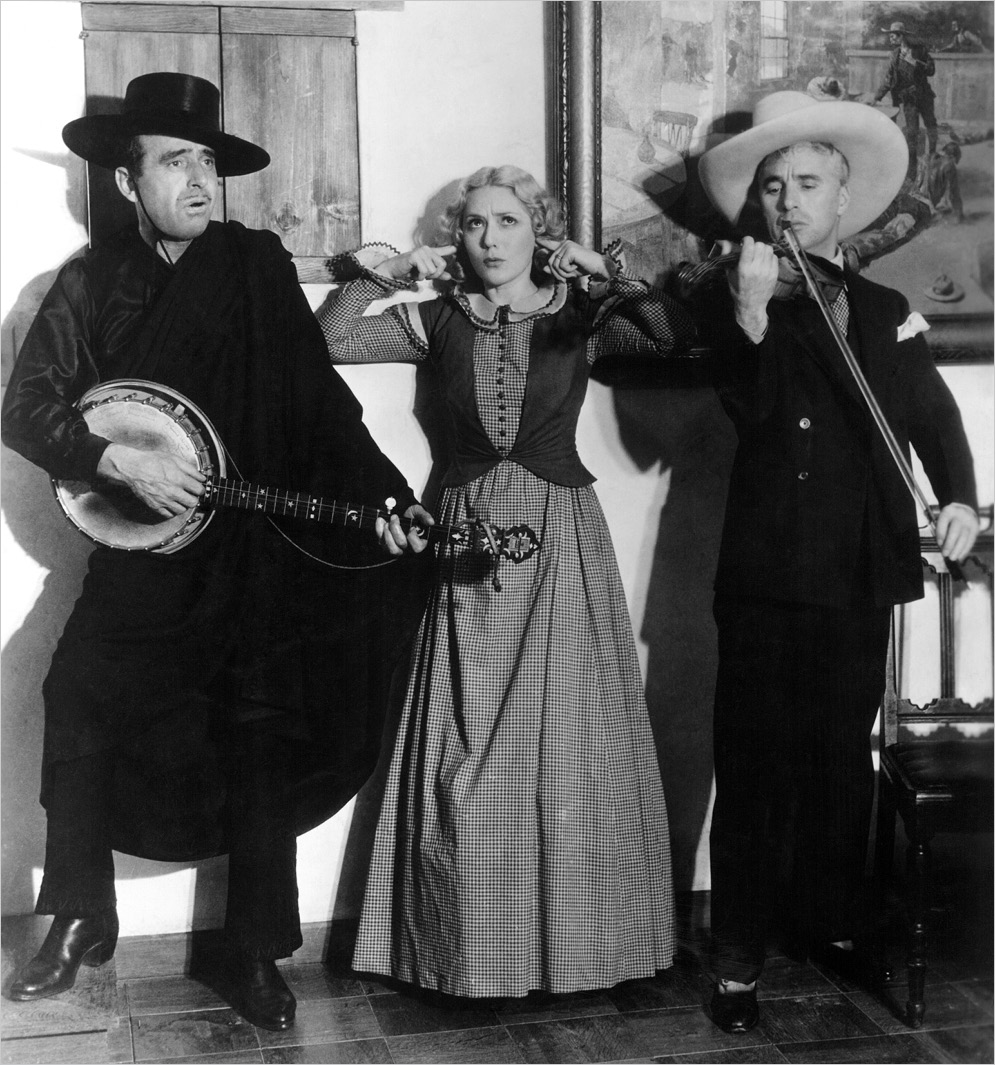
Douglas Fairbanks, Mary Pickford, and Charlie Chaplin at Pickfair for a New Year’s party.
Everett Collection
After the nightclub closed at three in the morning, they headed back to Swanson’s house, dragging the orchestra from the nightclub with them. Eventually breakfast was served, and Charlie Chaplin kept everybody entertained by doing his party routines—impersonations and set pieces he had honed over the years, all reputedly hilarious. Eventually, they got the prince back to the train station.
Now that’s a party!
When I came to Hollywood, the most prodigious party givers were Basil and Ouida Rathbone, both ferociously social. For their eleventh wedding anniversary, they invited 250 people to the restaurant Victor Hugo, which had been converted into a cathedral by dint of papier-mâché. The theme of the evening was “famous couples.” Rathbone and his wife were dressed as the Emperor Franz Joseph and the Empress of Austria; Eddie Robinson and his wife came as Napoléon and Joséphine; Jeanette MacDonald and Gene Raymond came as Romeo and Juliet.
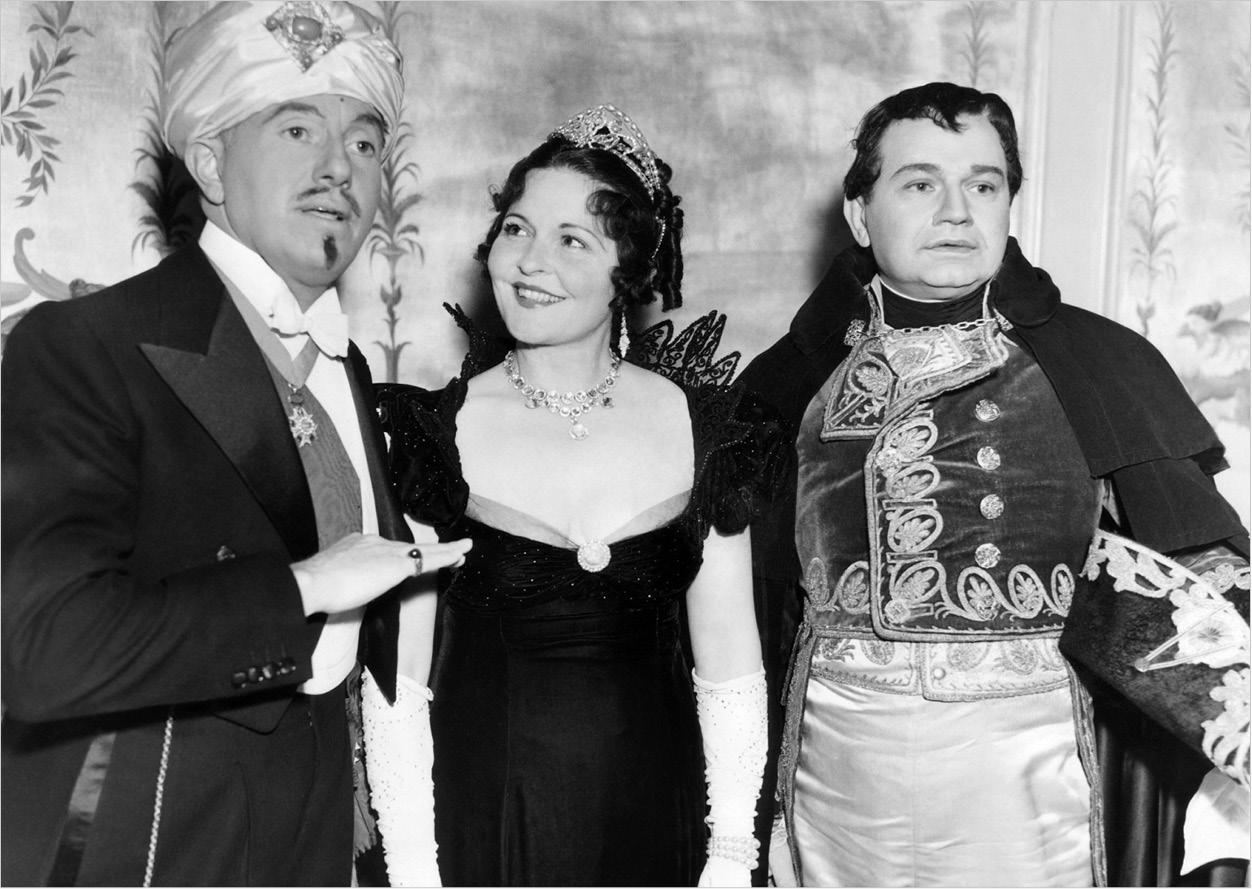
Jack Warner with Edward G. Robinson and his wife, Gladys Lloyd, at Basil and Ouida Rathbone’s eleventh wedding anniversary at Victor Hugo’s restaurant.
Everett Collection
Rathbone was a hardworking character actor and a multifaceted individual, which many actors are not. He’d been decorated for his service in World War I, was an expert fencer—there was a reason he made a lot of swashbucklers—and as an actor he was capable of giving a character a lot of different colors. He made a great deal of money throughout the 1930s and especially in the 1940s, playing Sherlock Holmes in a long-running radio series as well as a batch of films at Fox and Universal. But when he died in 1967, he left an estate of only ten thousand dollars.
Parties are expensive, but I’ll bet he had a ball.
Hollywood parties often featured some great practical jokes and running gags. There was a mousy character actor named Vince Barnett who became locally famous for moonlighting as a practical joker, generally under the guise of an insulting waiter. I saw Barnett in action, and he was hysterical. At one party, he would accuse the guests of stealing the silver; at another, he would yell at Charlie Chaplin for hogging attention. When he was introduced to Helen Hayes, he told her he could feel only pity for anyone married to a rat bastard like Charles MacArthur.
Barnett could be brutal, a lot like Don Rickles in the modern era. Both men played to an element of self-loathing in show business—many successful people feel like fakers who are just getting by, and there’s nothing more terrifying than the possibility of being caught . . . or funnier than being called on it by someone who knows how to do it.
By the late 1930s the Hollywood social networks were already largely worked out. The Germans tended to hang out at Ernst Lubitsch’s house in Beverly Hills when they weren’t at Salka Viertel’s in the Palisades. Literary types were often found at Edmund Goulding’s or George Cukor’s. The very old guard that used to hang around at Pickfair had broken up when Douglas Fairbanks and Mary Pickford divorced, but there was an elite group that was still invited to Charlie Chaplin’s house on Summit Drive for Sunday tennis, where he served tea from a large silver pot along with English sandwiches with the crusts cut off.
Louis B. Mayer had a Sunday open house at his place on the Santa Monica beach. It had been designed by MGM’s art director Cedric Gibbons in a Spanish style, and the walls were a foot thick for insulation against the heat of the summer. Mayer’s place was no cottage; it had twenty rooms and onyx and marble bathrooms installed by artisans imported from Greece.
The director James Cruze also had regular open houses at his Flintridge estate in the years before his death in 1942. He offered a large table piled with ham and roast beef sandwiches, and there was also a jardiniere just inside his front door filled with change, so that anyone who was financially inconvenienced could take a few dollars to get through the week.

Recreation around Hollywood wasn’t radically different from recreation anyplace else. There was golf—the best golfer of his generation was probably Bing Crosby, who had a handicap of precisely two.
I’ve come to believe that golf has been nearly as important to me as acting. If I had to characterize what the game has given me, I’d say a sense of manners, to go along with an abiding sense of humility, if only because golf is a game that will kick your ass. It teaches you how to deal with failure. In golf, sometimes things work and sometimes they don’t—just like in life. The game is fundamentally impossible—you will never conquer it, but it has a way of teasing you by giving you just enough success to keep you playing.
Golf has also opened up a lot of great, enduring friendships. And it’s a game you can take with you anywhere and practice all your life, as I proved when I shot my age at eighty-two.
Not that I’m bragging.
There was a period of a couple of months when I was a scratch golfer, but that was because all I was doing was hitting balls instead of reading scripts. For most of my life, I’ve played to an eight or ten handicap.
I come by my passion for the sport naturally; my father was a member at Bel Air Country Club practically from the time we moved there. When I was twenty-one, I paid the transfer fee to become a member myself. I would give up that membership when I went to Europe in the early 1960s, and there were a few other periods when I couldn’t play much—when my daughter Katie was born, and when Natalie and I married the second time and we had Natasha and Courtney to take care of. But about fifteen years ago I bought Howard Keel’s membership at Bel Air, and the circle closed. Now I’m a senior member and proud of it.
In the 1950s, and in the 1980s and 1990s and since, when I consciously took my foot off the gas pedal of my career, I played all the time, all over town and all over the world. I’ve played at Troon and St. Andrews in Scotland, and I shot a seventy-seven at Prestwich. I’ve had three hole-in-ones—at Bel Air, at Cypress Point, and at the Los Angeles Country Club.
Not that I’m bragging.
One of my proudest moments in golf came when I beat Sam Snead on Shell’s Wonderful World of Golf. It was a TV program in which Snead would take on various golf-mad celebrities, who got to play with their handicaps.
I knew Snead and had seen him at Bel Air several times. Sam liked to drink, and he was not averse to randomly chosen female companionship. I figured that if I got him early in the morning for a game, before the fog of the previous evening had cleared, I might have a chance.
The round was magical—I was all over him. It came down to the last hole. I had to make an eighteen-inch putt to win, because he wouldn’t give it to me. My hands were shaking, but I made the putt. I didn’t beat him straight up, but I beat him. And then Snead wouldn’t shake my hand. The program gave me a trophy, and I’ve still got it.
Fully twenty-five years later, in Palm Springs, there was Sam again. I went over to say hi.
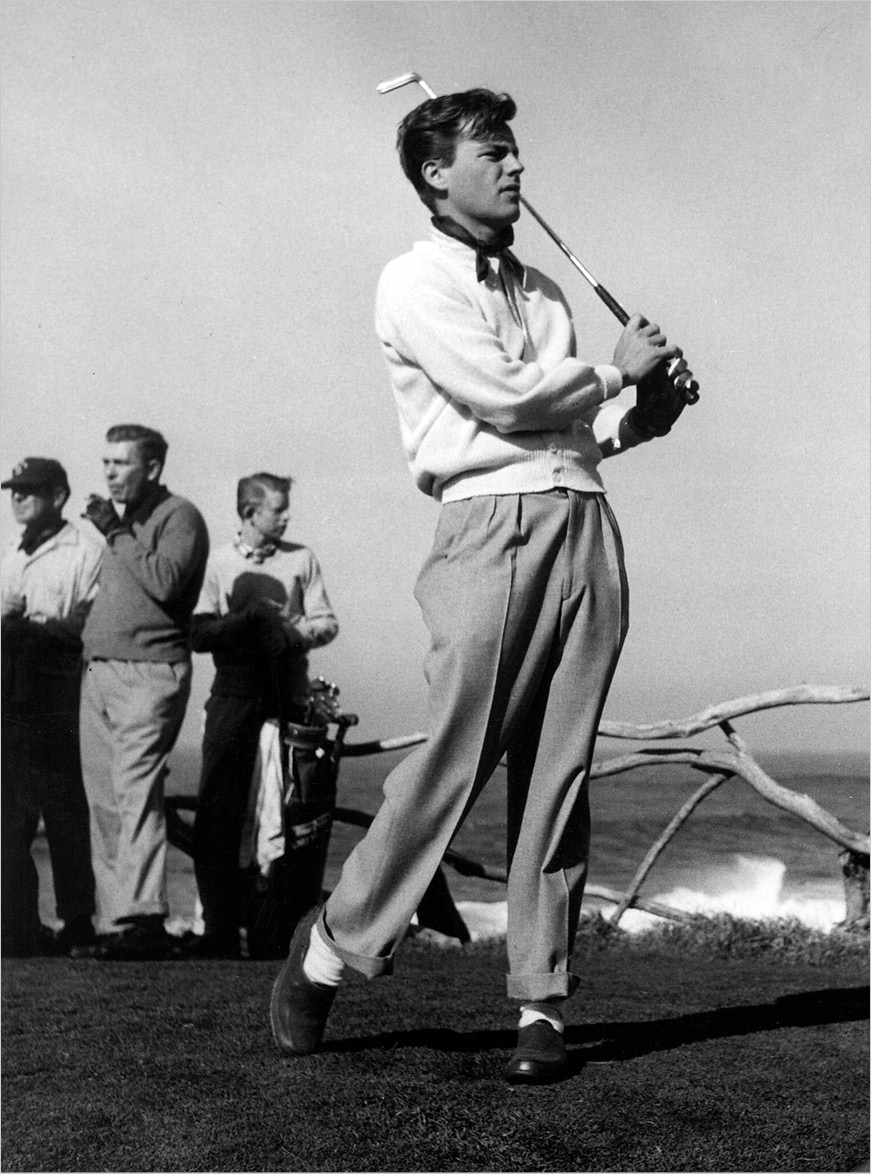
Me playing a round of golf, circa 1955.
Photofest
“You son of a bitch,” he said.
He was a terrible loser, but that’s probably why he was Sam Snead.
I’ve played with Jack Nicklaus and Arnold Palmer and Gary Player. I’ve played with Bing Crosby—great swing, and a passion for the game—and I’ve played at all the clubs around Los Angeles. At Lakeside, I played mostly with Don Johnson, Howard Keel, and Bob Hope.
At Hillcrest, I was even asked to become a member, which was an honor because Hillcrest is the Jewish country club. I love Hillcrest, for the company as well as for the course and for the food. Hillcrest has always had the best food of any country club I’ve played at. Groucho, Zeppo, and even Chico Marx were there all the time, as was George Burns. No, they didn’t golf—my usual golf partners at Hillside were Abe Lastfogel, Bud Yorkin, or Danny Kaye—but they kibitzed in the restaurant and the card room.
Of all the courses I’ve played, the most memorable was Augusta. To walk that land, to walk over that bridge, following in the footsteps of the great men who have become legends there, was a great honor.
But if someone were to tell me I could play only one more round of golf, it wouldn’t be at Augusta, but at Bel Air. I caddied there as a boy, saw Fred Astaire and Cary Grant and Randolph Scott and Clark Gable play there, and even had the temerity to offer Gable some advice about his putting, which turned out to be helpful.
Fred Astaire and I played at Bel Air often, usually nine holes very early in the morning. Actors don’t practice that much, and Fred was no exception—his handicap was in the teens—but as you might expect he had a beautifully rhythmic swing. (There are some actors who practice a great deal; Dennis Quaid and Jack Wagner are scratch golfers, or close to it.)
These days, I usually play Bel Air with Mike Connors, Grant Tinker, and Steven Goldberg. I love the course, and I know it so well—each blade of grass is familiar. Maybe I love it so much because I know it so well. With golf, familiarity doesn’t breed contempt, but satisfaction and tranquility.
Unless you shank an iron or blow an eighteen-inch putt. Then it produces rage. A fair trade-off for all the great times I’ve had on the golf courses of the world.
In the early 1990s, the producer David Wolper was making a film in collaboration with the USGA. We took the Warner Bros. corporate plane and traveled around the country, making sure to play every great course in America while shooting the documentary. To this day, I’m not sure which was the sideline—the golf we played or the documentary. Either way, it was one of the most pleasurable perks I’ve had in what I have to consider, on balance, a very lucky life.

Those people who didn’t golf often had boats—some of the most beautiful yachts were owned by the best and richest directors. I’m thinking of John Ford’s Araner and Cecil B. DeMille’s Seaward, both very impressive yachts. But even people who were much lower on the totem pole were serious sailors, like the character actor Frank Morgan, who kept scrapbooks about his yachting victories, which I believe included winning the Los Angeles to Honolulu race. Morgan loved to drink and sometimes did it at the Bel Air Country Club, where he was a member and where I knew him to say hello to. Other quality sailors were Errol Flynn (Zaca) and Humphrey Bogart (Santana).
Charlie Chaplin had a much smaller boat, Panacea, but it didn’t get an awful lot of use because Chaplin’s preferred recreation involved playing tennis on the court at his house.
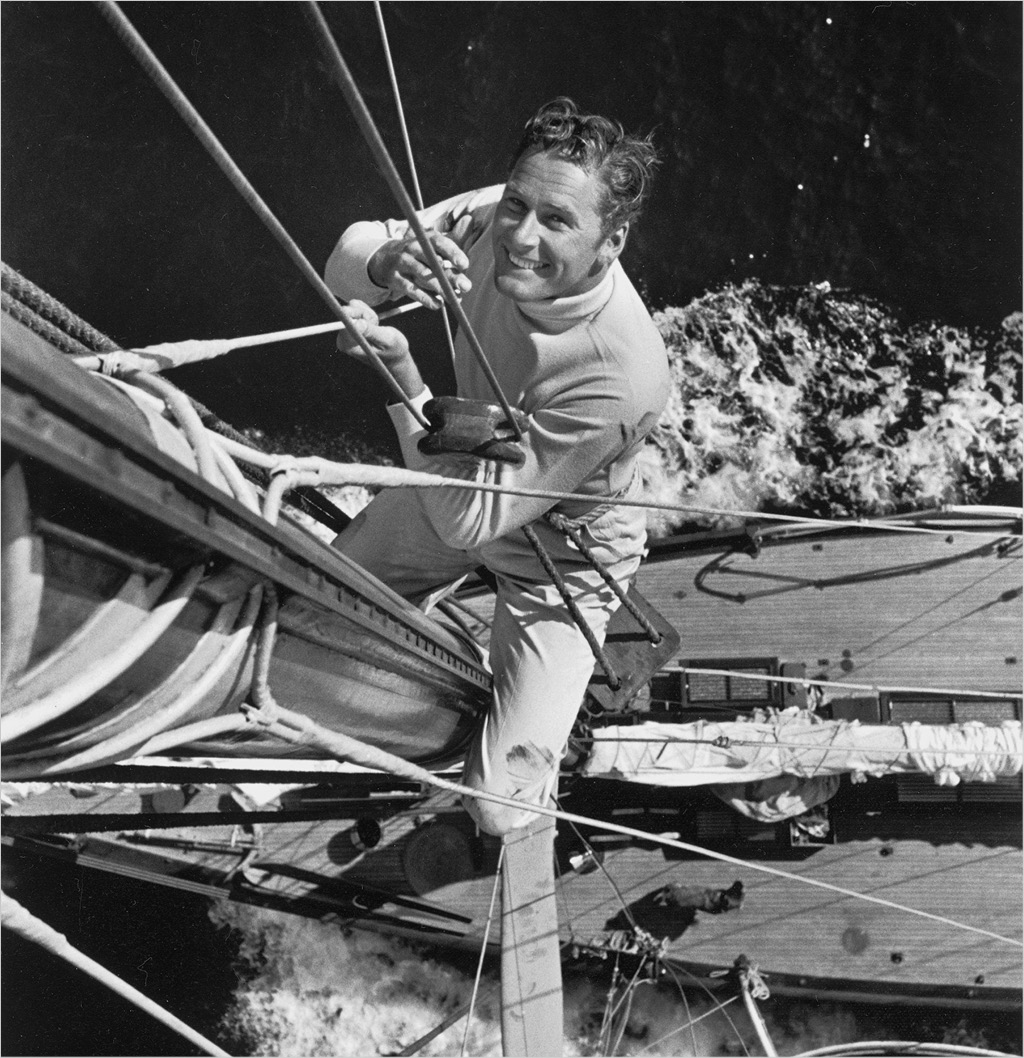
Errol Flynn heading for the crow’s nest on his gorgeous yacht, Zaca.
Time + Life Pictures/Getty Images
Out in Santa Monica were the Santa Monica Swimming Club and the Santa Monica Beach Club, whose members competed against each other in fierce volleyball games, seven men on a team. Joel McCrea and George O’Brien played for one team, Buster Crabbe for another. Cary Grant was around there at the time, too, working on the tan he always had.
Other people were interested in more earthbound hobbies. Racing, for instance. The comedy producer Hal Roach came up with the idea of the Santa Anita track, and Bing Crosby was president of Del Mar, near San Diego. Hollywood Park was organized by Jack Warner, who was chairman of the board, along with Raoul Walsh.
Hollywood Park became such an entertainment mainstay for the studios that both Variety and the Hollywood Reporter would print racing charts and results. If tourists were smart, they would usually head either to the racetracks or to the American Legion stadium in Hollywood, because they’d be sure to find a dozen or so stars there to snag for an autograph.
People with money to spend naturally look for ways to spend it, and horses are among the quickest ways to disperse a fortune. Harry and Jack Warner both had stables, as did Louis B. Mayer, whose stable was one of the top half dozen in the country for a number of years. It was Mayer who raised the standards of California stables to the point where they nearly achieved equality with their great counterparts in Kentucky. Others who had stables included Bing Crosby, Errol Flynn, Don Ameche, Myron Selznick, and William Goetz. Barbara Stanwyck and Zeppo Marx were partners in a stable called Marwyck.
Fred Astaire just loved the horses, and he owned a string of thoroughbreds that included a horse named Triplicate. Fred paid six thousand dollars for Triplicate and the horse went on to win over a quarter million dollars.
Walt Disney was a great polo enthusiast for a number of years, as were Spencer Tracy (a reckless player), Darryl Zanuck, Robert Montgomery, Gary Cooper, Hal Roach, Jack Holt, Leo Carrillo, and Charlie Farrell.
Polo necessitated owning a string of horses and having a total lack of fear of falling. The best of the polo players was probably Will Rogers, simply because he had the most experience with horses. Today Rogers’s polo field is part of Will Rogers State Park. For years I rode my own horses around the periphery of the field where Rogers and Darryl used to bang their horses and their heads.
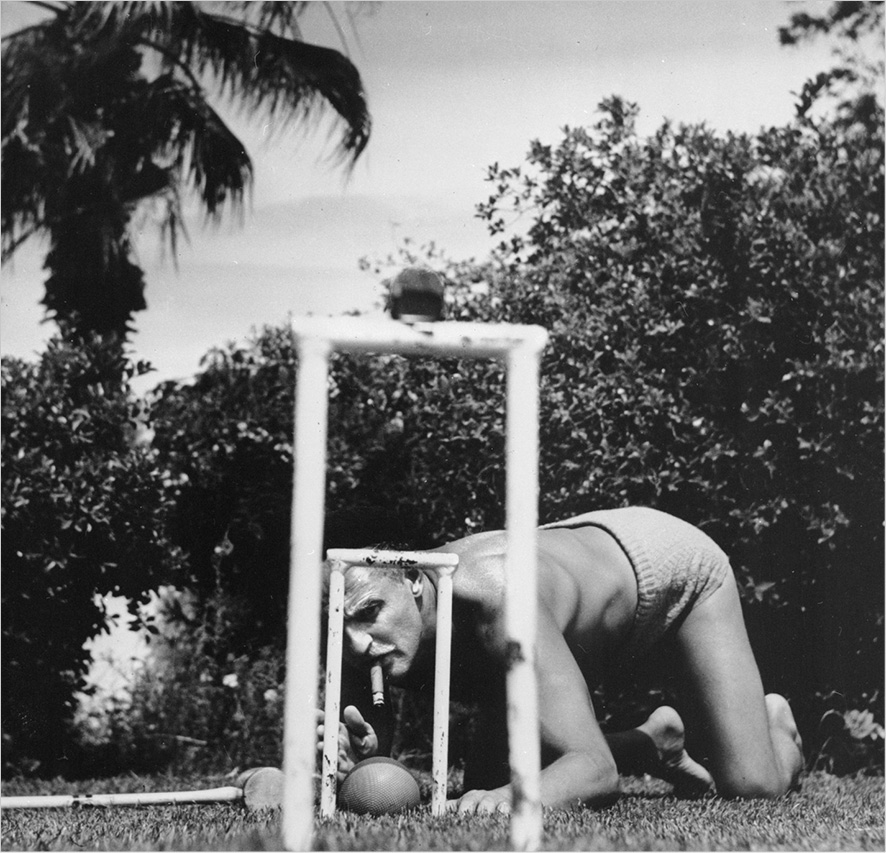
Darryl Zanuck at Howard Hawks’s East-West croquet match in Beverly Hills in 1946.
Getty Images
Darryl was a very tough polo player, with a large stable of ponies, but when I went to work for him after the war, he became more involved with croquet, which made the Fox stockholders much happier.
Croquet was the postwar sport du jour for the upper echelon in Hollywood, whose particular nature as an enclave became apparent with the enthusiasm for such a genteel sport, which up to then had been confined to places like Palm Beach or Newport. Also contributing to its fashionable aspect were requirements that held a certain snob appeal, for very few people could qualify—you needed a very wide, perfectly flat, expertly manicured grass field cut to the length of a putting green.
Croquet is reasonably entertaining to play, even though it takes forever to complete a game—a competition can go on all day and into the night, so you need a lot of stamina. At its most competitive, it’s not unlike playing thirty-six holes of golf.
My only problem with croquet is that it’s deadly dull to watch. I think its appeal was primarily to a group of people who were getting a little old for the hell-bent-for-leather aspects of polo but had to have something equally competitive—and croquet can be utterly vicious.
The first impetus for croquet had come from the East Coast in the 1920s, with the Algonquin Round Table crowd. Herbert Bayard Swope and Alexander Woollcott had croquet courts, and other people who played included Averell Harriman, Harpo Marx, Richard Rodgers, and Vincent Astor. I seem to recall that it was Moss Hart who brought the sport to the West Coast during World War II and introduced it to Darryl Zanuck, who regarded him very highly as a writer. Soon Zanuck introduced the game to all of his friends: Howard Hawks and Hawks’s brother Bill, Sam Goldwyn, Gregory Ratoff.
Croquet courts suddenly began appearing all over Beverly Hills, and Zanuck and Goldwyn would play for as much as a thousand dollars a game. Goldwyn was something of a fanatic about physical fitness, which may be why he lived into his nineties. His natural enthusiasms were for long walks and handball, but the latter became difficult after he broke an ankle. His second love, golf, simply made him too upset—one bad shot would lead to four more, which would lead to a ruined afternoon and, as the man said, a good walk spoiled.
Harpo Marx and Alexander Woollcott introduced Goldwyn to croquet, and his wife Frances built a court for him. The simple house rules were printed on a blackboard by a scorekeeper’s hut, which was actually a bar:
- Don’t get excited.
- Correctly remember balls you are dead on.
- Have patience with fellow members who are not as good as you are.
Croquet is usually a sedate sport, although nothing was sedate when Sam Goldwyn played it. It was his court, so he felt entitled to ignore his own rules when he felt like it.
The addicts, the people who were always at either Darryl’s court in Palm Springs or at Sam’s court in LA, were Louis Jourdan—who I believe was the best player of them all—Joe Cotten, Clifton Webb, Ty Power, and Cesar Romero. If the game was in Palm Springs, William Powell would act as the official cheerleader.
The high point of the craze for croquet was probably in July 1946, when Howard Hawks hosted a best-of-three East-West croquet championship. Moss Hart, Ty Power, and agent Felix Ferry played for the East, against Darryl and Hawks for the West. Floodlights were installed so the matches could go on far into the night. Zanuck and Hawks won the first game, but I was told that they got overconfident and proceeded to lose the second and third games, giving the victory to the East.
For the rest of us who went to Darryl’s Santa Monica house, there were other games. I recall marathon poker sessions among a round-robin that included Robert Capa, Constance Bennett, Lew Wasserman, and Howard Hawks’s wife Slim Keith. Sometimes, if Darryl wasn’t in the mood for poker or croquet, he’d play board games such as Labyrinth.
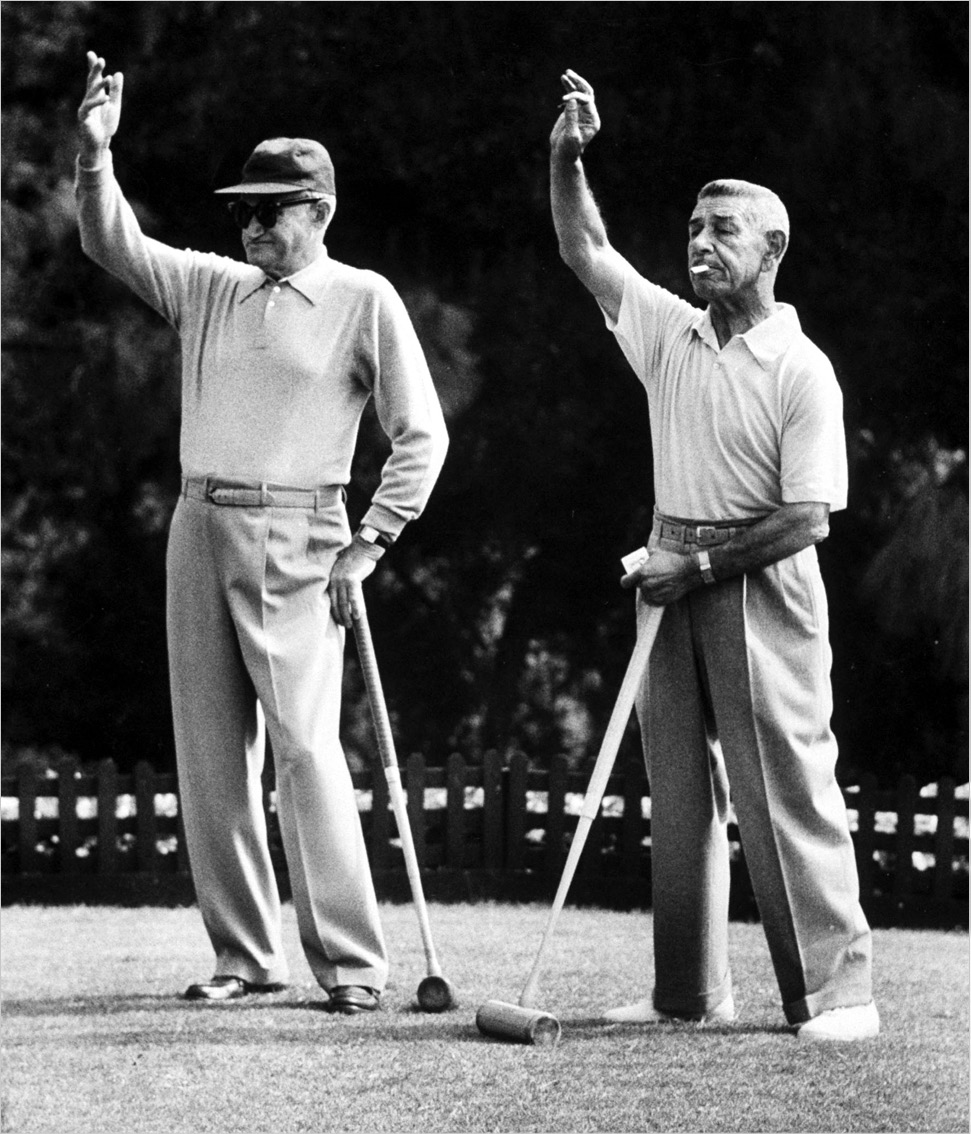
Restaurateur Mike Romanoff, right, playing croquet with film producer Samuel Goldwyn.
Time + Life Pictures/Getty Images
Others enjoyed hunting and fishing; Clark Gable and Robert Taylor were among this crowd. Gable particularly enjoyed the Teal, a club south of Bakersfield where I was also a member, or the La Grulla Gun Club in the Baja Mountains near Ensenada. For fishing, Clark would head to the Rogue River in Oregon.
A much smaller subset enjoyed flying, but that was nearly as expensive as sailing. Ben Lyon and Bebe Daniels were among the first stars to pilot their own planes; others included Ray Milland, Wallace Beery, George Brent, and Jimmy Stewart, who, as I’ve mentioned, was a superb pilot from his missions in World War II. Robert Taylor also flew his own plane, and there were some successful directors who flew as well, among them Henry King and Clarence Brown. As a matter of fact, Brown would fly his plane to work—he’d land at the Culver City airport, take a car to MGM, and at the end of the day fly back home.
Nice work if you can get it.